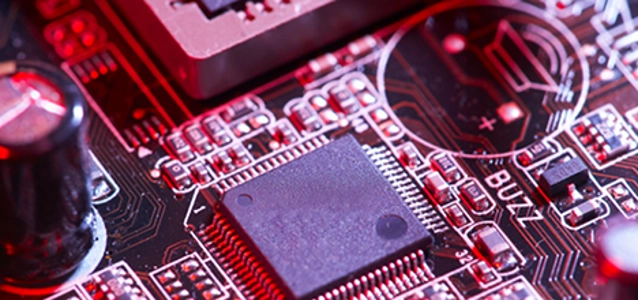
© franz pfluegl dreamstime.com
Electronics Production |
Chip inventory at Semi suppliers at worrisome high
Chip inventory held by semiconductor suppliers reached alarmingly high levels in the third quarter of 2012 amid weak market conditions, according to an IHS iSuppli Semiconductor Inventory Insider Market Brief from information and analytics provider IHS (NYSE: IHS).
Overall semiconductor revenue declined by 0.7 percent sequentially during the fourth quarter last year. The poor results came after inventory reached exceedingly high levels by the end of the third quarter in 2012, amounting to 49.3 percent of total semiconductor revenue—more elevated than at any point since the first quarter of 2006.
Chip stockpiles among semiconductor suppliers had actually gone down during the final two quarters of 2011, showing a promising drawdown. But then inventories steadily ticked up again after that, reaching 47.5 percent of total revenue in the second quarter before hitting the current peak in the third—the latest time for which full figures are available.
Sizing the stockpiles
The inventory level being measured refers to chip stockpiles specifically in the hands of semiconductor suppliers, not to inventory throughout the electronics supply chain. Chip level at the supplier level is then compared against combined revenue from a sample of 75 semiconductor supplier companies excluding memory, which is tracked separately because of that market’s typical late results. A low inventory-to-revenue ratio is preferable, given that higher levels indicate not only unsold stockpiles but also unrealized revenue tied up with the stagnant inventory.
Demand debacle
“The uncomfortably high level of inventory among semiconductor manufacturers of nearly all stripes is a result of key demand drivers failing to materialize,” said Sharon Stiefel, analyst for semiconductor market intelligence at IHS. “Demand for semiconductor devices has typically come from new products that consumers feel compelled to purchase. But going into the holiday season last year, no such new products marshaled enough impetus to overcome consumer fears about lingering economic woes. Two months prior to Christmas, consumer purchases of electronics had grown by only 0.7 percent, the worst performance since 2008.”
Also contributing to depressed conditions was the poor performance of the industry’s data processing segment, traditionally the largest user of semiconductors. In fact, mobile PCs were projected to decline in 2012 when final figures are tallied, toppled from dominance by media tablets. Ultrabooks and other ultrathin PCs, meanwhile, did not produce the demand for semiconductors originally expected as the year progressed.
Semiconductor sectors
Despite the collective rise in inventory stockpiles, some semiconductor segments performed better than others. For instance, with feature-rich smartphones and tablets taking the place of traditional PCs among consumers and eroding PC market share, the devices were anticipated to provide the strongest demand in the final quarter of 2012.
As a result, semiconductor revenue for the wireless segment was expected to climb almost 4 percent. Semiconductor sectors benefiting from the tremendous growth of handsets and tablets included logic, analog and NAND flash memory, with those semiconductor channels refilling following strong shipments even into the beginning of this year.
The first quarter of 2013 likely will see growth in the industrial and automotive electronics segments. Other semiconductor markets, for their part, will overcome the seasonal decline normally expected at this time of year and then start to rebound around the second and third quarters. Such assumptions, however, rest on the even larger factor of the global economy, currently a volatile variable itself with no set outcome.
If global economic forecasts perform according to positive expectations, semiconductor revenue could grow by 4 percent in the second quarter and by a very solid 9 percent in the third. However, if demand evaporates, semiconductor suppliers will find themselves in a deplorable oversupply situation, which would then lead to inventory write-downs throughout the year.

